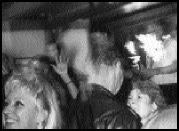SOME WOULD ARGUE that building transit-oriented development without public transit is like putting up a truck stop without laying down a highway first.
But that’s exactly what the Seattle City Council voted to do last Monday when it approved eight new zoning districts for light-rail stations that may or may not ever appear.
The zoning overlays, in the interest of promoting “transit-oriented uses” and “pedestrian activity,” would permanently ban car-oriented businesses—car dealerships, gas stations, warehouses, and the like—around proposed light-rail stations throughout the city. That means no more gas stations in the heart of Capitol Hill, First Hill, or the U District; no more auto repair shops or car washes down in the Rainier Valley around Othello and McClellan; and no drive-through espresso or fast-food windows on top of Beacon Hill.
The changes—opposed by council members Nick Licata, Judy Nicastro, and Peter Steinbrueck—would, in the words of Capitol Hill Community Council President Ann Donovan, “restrict our ability to have services that are essential to our community.” Although existing businesses would be grandfathered under the ordinance, they could only expand under limited conditions. And once they’re gone, they’re gone for good. “[If] any of these auto-based businesses go out of business, they would not be able to reopen an establishment of that kind,” Donovan says.
Less crucial to built-out neighborhoods like Capitol Hill but of immense concern to less dense areas like the Rainier Valley is that the ordinances change (and, in many cases, increase) the density, size, and height of developments allowed around the proposed light-rail stations. (Rainier Vista, the most controversial, was pulled from the legislation by council member Richard McIver pending an agreement between the city and the Seattle Housing Authority, which wants to replace its public-housing properties there with dense mixed-income housing.)
Licata and Nicastro note that the now-permanent restrictions, which have been extended as “interim” overlays three times in the past two years, make little sense now that Sound Transit has drastically scaled back its light-rail dreams—from a 24-mile line between Northgate and the airport to the currently favored option, a southern spur from downtown to that would stop just shy of Sea-Tac. (The actual alignments won’t be made public until the Sound Transit board’s Sept. 27 meeting.) “[The prohibitions] will restrict current businesses from expanding and will restrict their property rights,” Licata says. “They’re trying to create an ideal urban village when you don’t have the momentum to do it. And when you take out the possibility of rapid transit, it just doesn’t make sense.” That’s particularly true, Licata says, in areas like Rainier Valley, where estimated costs have skyrocketed, estimated ridership has plummeted, and a disproportionate number of “prohibited” businesses—especially warehouses—are found.
Nicastro says Sound Transit’s light-rail plans are “still too fictitious” to justify a series of blanket rezones that could uproot businesses and make it harder for landowners to sell their property. “Once a plan is in place, and Sound Transit has a responsible, real alignment with real money and it’s a more cohesive plan, then I don’t mind,” Nicastro says. “Right now, this [plan] is a fiction.”
Not everyone agrees. McIver, transportation committee chair and the council member most vocally supportive of Sound Transit, said at the meeting that whether or not light rail moves forward, station area overlays make sense. “These are areas that are going to attract transit” of some sort, McIver said. (But not monorail—that system, if ever built, would stretch from Ballard to West Seattle on the other side of Lake Union.)
And longtime light-rail proponent Roger Pence, who has worked for Sound Transit, claims station area overlays are just the latest tar baby for light-rail foes that oppose anything with the potential to move rail transit forward. “Never underestimate the ability of the anti-rail people to hype an issue,” Pence says. “Many of these neighborhoods that [will] have light-rail-supported increased density around light-rail stations as part of their neighborhood plans, they were comfortable with it. It’s only lately, when the City Council actually started implementing some of these plans, that a different group of people started piping up and saying, ‘We don’t want [the overlays].'”
But Donovan says station area overlays—in the absence of light-rail stations—were never part of her neighborhood’s plan. “Basically, you’re putting zoning in place without the reason for needing it. All that zoning was designed specifically for a transit district” that may never come, she says. “It’s kind of putting the cart before the horse.”







